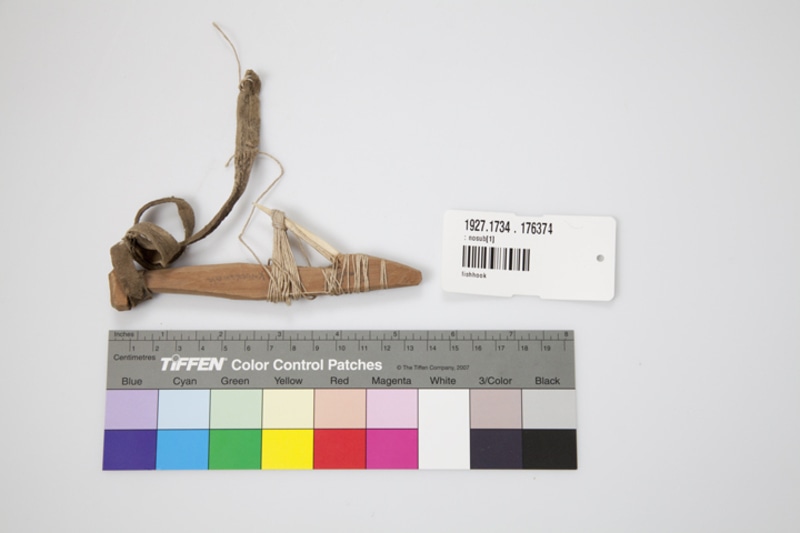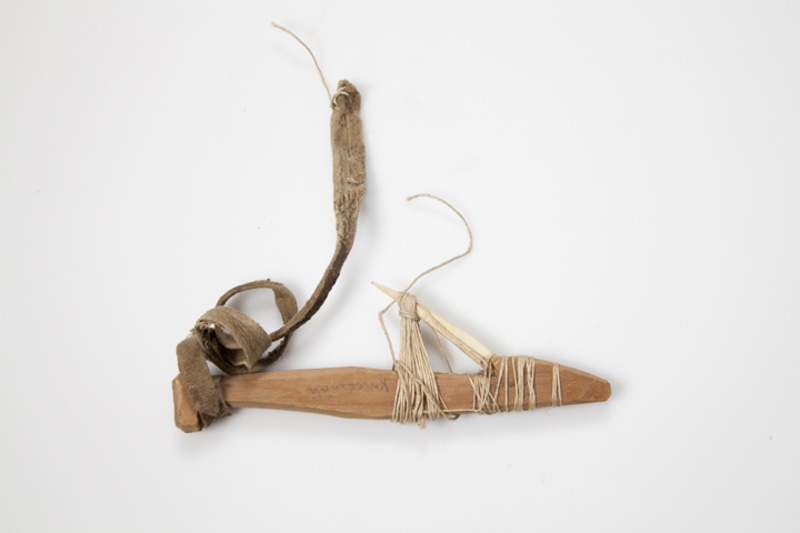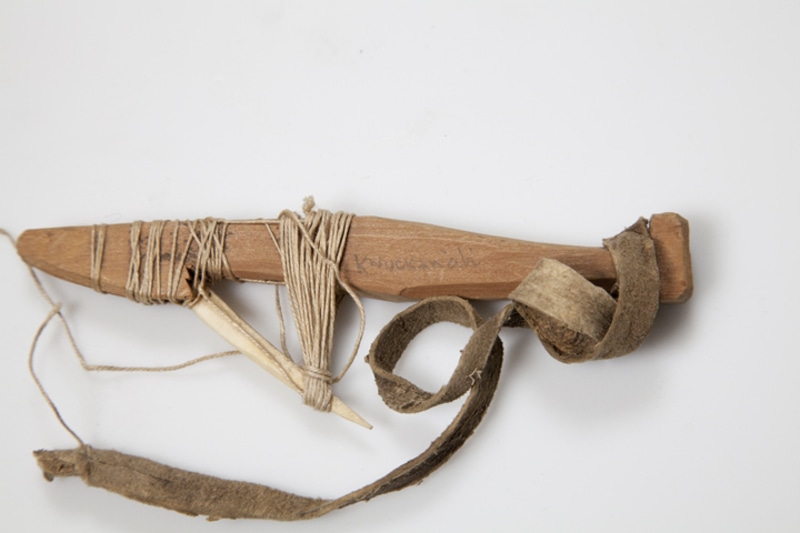fishhook Item Number: 1927.1734 . 176374 from the The Field Museum




Citations From Vanstone (1982) Article
« Fishing equipment in the Speck collection includes seven fish hooks, five of which have wooden shanks and bone points. The shank is split at the distal end for insertion of the point at about a 30 degree angle. Commercial two-ply twine was used to bind the split area of the shank and more twine was secured about the center of the point and then about the shank. There is a knob at the proximal end of the shank to which is fastened a short piece of caribou skin which served as a leader (fig. 3g). »
Vanstone, James W. "The Speck Collection of Montagnais Material Culture from the Lower St. Lawrence Drainage, Quebec." Fieldiana. Anthropology. New Series, No. 5 (October 29, 1982), p.6, fig. 3g (p.31).
« Hooks of both types were baited with minnows and used with set lines. Muskellunge, pike, and other large fish swallowed the hook which then caught in the stomach rather than in the mouth or gills. Fish hooks with wooden shanks were used by the neighboring Mistassini and are described and illustrated by Rogers (1967, p. 88, pi. XIV-A). » Ibis.
Translation Of Citations From Vanstone (1982) Article
« L’équipement de pêche de Speck de la collection inclut sept hameçons à poisson, dont cinq comportent des pointes en os et des jarrets de bois. Le jarret est fendu à l’extrémité distale pour l’insertion de la pointe à un angle d’environ 30 degrés. La ficelle commerciale à deux brins était utilisée pour attacher la section fendue du jarret et plus de ficelle était utilisée au centre de la pointe et ensuite au jarret . Il y a un nœud à l’extrémité proximale du jarret auquel est attachée une courte pièce de peau de caribou servant comme bas de ligne de pêche (fig. 3g). »
Vanstone, James W. "The Speck Collection of Montagnais Material Culture from the Lower St. Lawrence Drainage, Quebec." Fieldiana. Anthropology. New Series, No. 5 (October 29, 1982), p.6, fig. 3g (p.31).
« Les hameçons des deux types étaient utilisés avec des ménés comme appâts et des lignes fixes. Maskinongés, brochets et autres gros poissons avalaient l’hameçon qui restait alors prit dans l’estomac plutôt que dans la bouche ou les branchies. Les hameçons fait de jarrets de bois était utilisé par les voisins de Mistassini et sont décrits et illustrés par Rogers (1967, p. 88, pi. XIV-A). » Ibis
Item History
- Made in Pekuakami, Lac Saint-Jean, Lake St. John, Labrador, Canada
Who
- Culture
- Ilnu, Montagnais and Innu
Where
- Holding Institution
- The Field Museum
- Made in
- Pekuakami, Lac Saint-Jean, Lake St. John, Labrador, Canada
Other
- Nom De L'objet
- Hameçon à poisson
- Matériaux
- os
- Ethnic Group
- Montagnais
- Collection
- Lake St. John Objects
- Provenience
- North America, Canada, Quebec, Labrador, Lake St. John